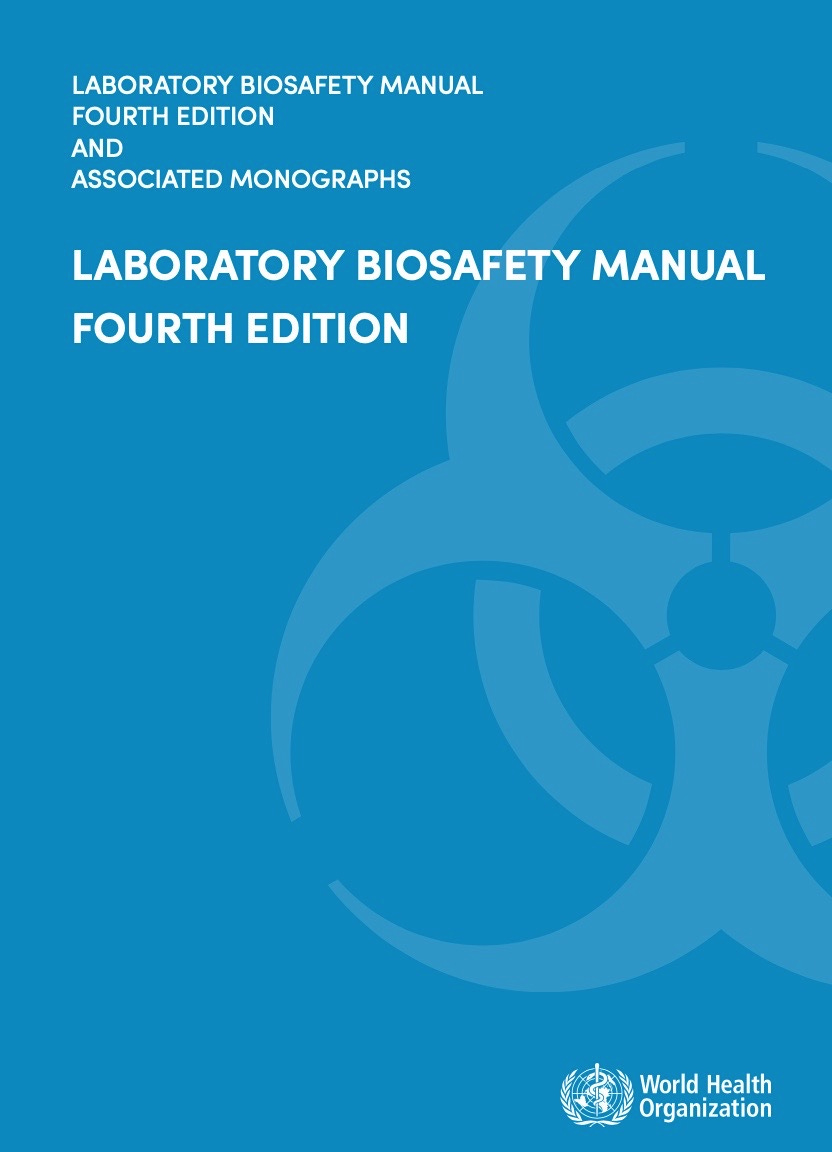The WHO’s BioHub was about to start collecting deadly potential pandemic pathogens (PPP) last year. Can labs transfer and manage deadly microorganisms safely? What do the experts say?
The WHO is essentially a PR agency and publishing company that issues guidelines, standards and reports. As in the following report, the guidelines are written by credentialed outsiders, while WHO project managers put the material together and design the final product. WHO has limited scientific expertise but it does know publishing and project management. Dozens of international experts contributed to the manual below on making laboratories (particularly those working with potential pandemic pathogens) more secure. So, can we make such labs reliably secure? Can we stop lab leaks? What did WHO’s manual say about this in 2020, before WHO developed the BioHub? I’ve created a pdf of the WHO monograph (below) and have excerpted from the document, then discuss the issue further, in light of recent events at Fort Detrick.
First I look at the question of transferring deadly agents between laboratories.

Note the use of the word minimize rather than prevent “release during transit.”

Below, the risks of a PPP bio-agent transfer are acknowledged: loss, theft, misuse, diversion and intentional release.


Yes, the brochure admits, “Even the most well prepared laboratory may experience unintentional or intentional incidents or emergencies despite existing prevention or risk control measures.”
Guess what? The US’ premier high containment labs have had recurring safety problems. The CDC exposed dozens of employees to anthrax. The Army’s Dugway Proving Ground sent live bird flu to 100 labs around the world, mistakenly thinking the samples were inactivated. Alison Young wrote a book about all the escapes she researched for USA Today.

In 2019, the CDC shut down a high containment lab at Fort Detrick, the Army’s premier biodefense laboratory, for inadequate decontamination of waste products.
In late April 2025, at a different high containment (BSL-4) laboratory on the Fort Detrick campus, but belonging to NIAID rather than the Army, and managed by a contractor, one person cut a hole in another person’s PPE gear—allegedly after a romance gone bad. That is why the lab was shut down 2 weeks ago by the NIH director. No one has released the name(s) of the microorganisms that could have infected the exposed lab worker. The public was at risk as well, according to NIH Director Dr. Bhattacharya. An investigation is ongoing and the lab will likely be shuttered for many months.
You only use a BSL-4 for the most dangerous, generally untreatable microorganisms. Dr. Bhattacharya also explicitly noted that there was an ongoing problem with the safety culture at the lab. Which had not been fixed. It is furthermore worrying that it took at least a month for the incident (which could be designated an attempted murder) to be reported to the NIH Director.
Here’s what Dr. Bhattacharya told Glenn Beck regarding COVID:
It was hubris.
This idea that we could somehow, if we go into the case of China and all the wild places.
Bring all those viruses we find there.
It happens that we find there. Into the lab.
Catalog them.
We can somehow prevent all pandemics from happening.
Making them more dangerous to humans.
We can somehow as a result of that exercise, make it less likely to have pandemics happen.
Of course, what we found out, the opposite is true.
You can’t do this work entirely safely.
The US government monitors work with dangerous pathogens, termed “select agents” and issues a yearly report. From the latest 2023 report comes the following very frightening graphic:
16 Incidents were reported to the FBI. In just one year!


Here is another worrying statistic from the report: There were 215 releases of agents reported to the federal program! One worker became ill as a result.

What will it take for us to stop playing with fire? While the WHO wants to get its hands on these agents, and share them wantonly (as noted in earlier drafts of the Pandemic Agreement), high containment labs are extremely expensive to run, and frankly, the WHO can’t even pay its own staff, and currently plans to operate for the rest of 2025, 2026 and 2027 on a shoestring budget. Trying to fund and run a BioHub as well is sheer folly.
Transferring deadly viruses around the world, or putting the genetic sequences online so scientists anywhere can recreate them is more than folly—it is criminal behavior. We must stop it